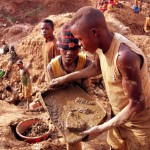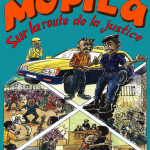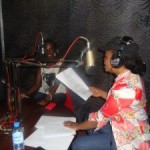The Disputed Lands of the DRC

The territory of Masisi in North Kivu is a beautiful and fertile area, but has also been the center of numerous conflicts in the East of the DRC.
by Valentin Manzubaze
History
The territory of Masisi in the Democratic Republic of the Congo (DRC), has a very complex history. During the colonial period, colonists worked with local power holders, a group essentially comprised of the Hunde community. The colonists solicited external labor from their colonial neighbor Rwanda, and above all those from the Hutu community, who came to work in the tea plantations. “In order to make the vast zones of North Kivu favorable for livestock farming and agriculture, the colonial powers began displacing Banyarwanda families to the Kivus, and more precisely to Masisi. According to the literature, close to 10,000 families were forcefully removed from Rwanda and relocated to North Kivu,” scholar Kakule Pilipili explains.[1]
At the time of decolonization in 1960, all the lands that were exploited by the natives remained largely in the hands of the Hundes, who held the traditional power to redistribute lands. Consequently, anyone who wanted to obtain lands had to go through these traditional Hunde leaders.
Since 1973, the Bakajika law, promulgated by President Mobutu, stipulates that the soil and the subsoil belong exclusively to the State. Because of this, the people of the Rwandophone Tutsi community living in Masisi solicited the traditional Hunde leaders for these lands. These leaders in turn awarded them the lands and negotiated the property titles, authorizing the Tutsis to clear out anyone living there.
In the 1990s, due to population growth, the fertile lands became increasingly scarce. In 1992, the war of Kanyarwanda broke out in Masisi. This war pitted the Hutus and the Tutsis against the Hundes simply because the Hutu and Tutsi populations speaking Kinyarwanda were identified as Rwandans. As is often the case, ethnic prejudice was projected onto disputes over land.
After the flight of Rwandans in 1994 following the genocide, many Rwandans found themselves in the middle of Masisi. The co-habitation of displaced Rwandans and the indigenous population became more difficult as land access became even more contested.
Getting to the Heart of the Matter
As in many other parts of the world, property conflicts in Masisi center on farmers’ disputes with those who raise livestock. In Masisi, the herders are largely Tutsis, and the farmers are typically Hutus. Since 2011, the concessions of Lukopfu, Kaniro, and Gatuovu, formerly occupied by the Belgian colonists, remained in the hands of Hutus who used them for agriculture.
Given that the customary law gives Hunde leaders the right to allocate land, Tutsi herders accordingly sought the property titles to these disputed lands. After successfully acquiring land concessions containing Hutus, Tutsi livestock farmers began introducing cows. The Tutsis guarded their cows with shot guns, and their cows ravaged the cultivated lands of the Hutus.
Certain Hutus attempted to defend themselves by creating an armed group called “Nyatura.” This group frequently retaliates by cutting the Tutsis’ cows and even killing and chasing the Tutsi shepherds themselves. Following the proliferation of armed groups and property disputes in this zone, the members of other ethnicities such as Hundes, Tembos, and Nyangas, created an armed group called “Raiya Mutomboki,” which means, “Angry Citizens.” They see the Hutus and Tutsis as foreigners who, by bringing problems from outside, are at the root of all conflicts in East DRC. The group claims that their purpose is to defend the Congo, and they are dead-set against all who speak Kinyarwanda, Hutu, or Tutsi. However, like all armed groups operating in the region, they have been known to commit massacres on unarmed civilians.
These clashes and interethnic demands are false solutions to a problem that has its roots elsewhere. The real cause of the problem is hidden behind the personal economic interests of the leaders of these armed groups.[2] An armed group has an interest in securing economic benefits such as the taxation of the population, the extraction of minerals, and the appropriation of public goods like cultivable lands. In the struggle for these scarce benefits, the area has begun to witness a proliferation of armed groups and a growth of interethnic hate and mistrust.

The local leaders of Masisi discuss the intercommunity conflicts, and how to resolve them.
What to do?
In these conflicts, land disputes are always at the forefront, and are invariably mixed up with issues of power and identity. As a response, SFCG recently organized a day of reflection for State and customary leaders. The reflection was about land conflicts in Lukopfu, Kaniro, and Gatovu and it brought together representatives of both farmers and herders.
A very important first step in the mediation of such a conflict is to bring disputing parties to the same table. The Hutus and Tutsis, having both suffered at each other’s hands, were eager to participate in planned activities of solidarity that took place close to Katale, a town located between Lushebere and Lukopfu.
In Lushebere, the local leaders discussed the stakes of the conflict. On the one hand, the farmers consider the lands as belonging to them because they were the first to occupy them after the departure of the colonists. On the other hand, the herders defend their claims by saying that they bought the lands in accordance with local traditions.
During the day of reflection, SFCG oriented these communities in their search for solutions that would be acceptable to all parties. The event let the groups reflect on an activity of community rapprochement that would get these groups working together on projects aimed towards common, and thus unifying, goals. Participatory theater (see the SFCG-DRC web site for more information on participatory theater) was chosen and will be carried out by the participants to persuade everyone, whether farmer of herder, to promote peaceful co-habitation.
This play will be a way to convince the community to work together, and to move away from the trap of seeing all problems through an ethnic lens. Everything starts at the local level and participatory theatre provides an opportunity for the community to discuss the problems they face as well as hear all of the different perspectives concerning these problems. This kind of constructive and collective analysis sets the community on a more inclusive path toward peaceful coexistence and empowers them to address structural problems non-violently. The challenge is great, but we’re off to a good start.
[1] Kakule Pilipili. 2011. Université de Kisangani. Mémoire de fin de cycle de licence.








